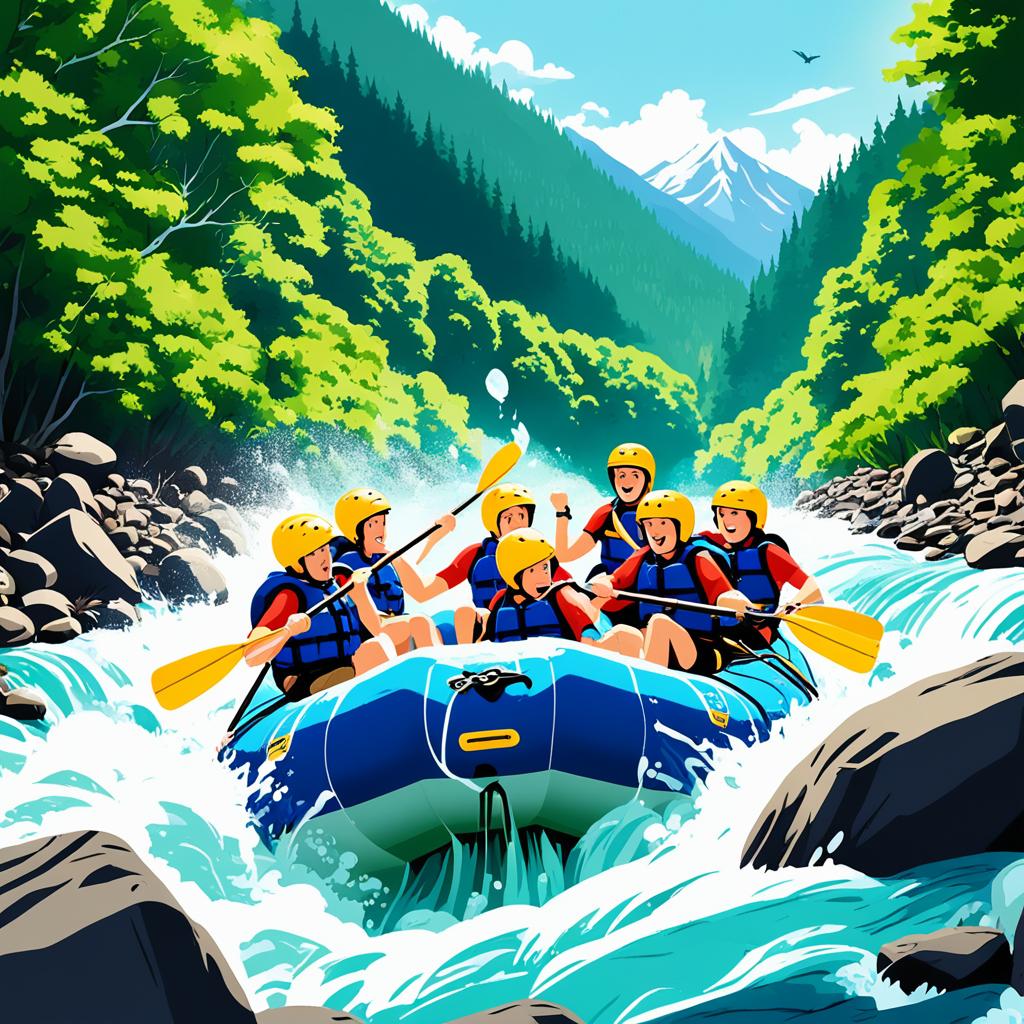Have you ever wondered what sets adventure tourism apart from other forms of travel and leisure? What makes it a unique and thrilling experience that attracts thousands of travelers each year? In this article, we will explore the defining characteristics of adventure tourism and delve into the world of outdoor exploration and unconventional means of transportation.
Adventure tourism is not your typical outdoor leisure activity. It goes beyond the realm of traditional sightseeing and relaxation. Instead, it embraces physical activity, challenges the boundaries of comfort, and offers a chance to explore the world in unconventional ways.
So, what are the key characteristics of adventure tourism? How does it differ from other forms of travel? And why do people seek out these thrilling experiences? Join us as we unveil the answers and dive into the exciting world of adventure tourism. You may just find yourself inspired to embark on your next adventure!
Activities Involved in Adventure Tourism
Adventure tourism offers a wide range of exhilarating activities that allow you to immerse yourself in thrilling experiences while exploring new environments. Whether you crave physical challenges, cultural exchange, or a deep connection with nature, there’s something for everyone in adventure tourism.
Here are some of the exciting activities you can expect to encounter:
- Day Hiking and Backpacking – Lace up your boots and embark on scenic hikes through breathtaking landscapes. Discover hidden trails, encounter wildlife, and witness the beauty of untouched wilderness.
- Zip-Lining – Experience the rush of adrenaline as you soar through the treetops on a zip-line. Enjoy stunning aerial views and feel the wind in your hair as you conquer heights with ease.
- Climbing and Free Fall Experiences – Test your limits and conquer towering cliffs and rock faces. Feel the thrill of scaling new heights and embrace the exhilaration of free-falling during controlled descents.
- Rafting – Navigate roaring rapids, conquer swirling currents, and bond with your team as you navigate down rivers and canyons. Rafting offers an adrenaline-pumping adventure that combines excitement and teamwork.
- Mountain Biking – Hop on a bike and traverse rugged terrains, winding trails, and challenging tracks. Feel the rush of speed as you explore scenic vistas and forests, all while pushing your physical limits.
- Skiing and Snowboarding – Conquer snow-covered slopes and feel the freedom of gliding through fresh powder. Whether you’re a seasoned pro or a beginner, skiing and snowboarding provide thrilling experiences in stunning mountainous landscapes.
These adventure tourism activities not only offer opportunities for physical activity and exploration of natural environments but also allow for cultural exchange. Engage with local communities, learn about their traditions and customs, and gain a deeper understanding of diverse cultures.
Embark on an adventure tourism journey and create memories that will last a lifetime as you push your boundaries, connect with nature, and immerse yourself in new and exciting experiences.
| Activity | Physical Intensity | Cultural Exchange | Nature Exploration |
|---|---|---|---|
| Day Hiking and Backpacking | Medium | High | High |
| Zip-Lining | High | Low | Medium |
| Climbing and Free Fall Experiences | High | Low | Medium |
| Rafting | High | Medium | High |
| Mountain Biking | High | Medium | High |
| Skiing and Snowboarding | High | Low | High |
Target Market of Adventure Tourism

When it comes to adventure tourism, the target market is comprised of adventure travelers who are seeking unique and thrilling experiences. This target market consists of both males and females, with a fairly even split across genders. Adventure tourists are individuals who are interested in participating in “hard” adventure sports as well as other adventurous activities.
One key characteristic of the target market for adventure tourism is that they are high-yielding consumers. These are individuals who are willing to spend more on their travel experiences in order to enjoy exciting and memorable adventures. They value the opportunity to engage in activities that push their limits and provide them with a sense of thrill and excitement.
It’s important to note that adventure tourism activities often come with higher risks compared to traditional forms of travel. As a result, normal holiday insurance policies may not cover these activities. Adventure travelers should consider specialized insurance packages that provide coverage for the specific risks associated with adventure tourism.
Adventure travelers are a lucrative target market for the tourism industry. By catering to their desire for unique and thrilling experiences, businesses can attract these high-yielding consumers and benefit from their spending power.
European Market for Adventure Tourism

Europe is a bustling hub for adventure tourism, attracting travelers from all over the world who seek unique and unforgettable experiences. With its diverse landscapes, rich cultural heritage, and changing attitudes towards travel, Europe offers a plethora of opportunities for adventure enthusiasts.
Adventure travelers from Europe play a significant role in boosting local economies, with a substantial portion of their travel expenses being spent on location. According to recent studies, two-thirds of adventure tourists’ expenditures are directed towards supporting local businesses and communities.
The United Kingdom and Germany stand out as key markets for adventure tourism in Europe. These countries have a large number of adventure travel enthusiasts and offer a wide range of adventurous activities suitable for all levels of experience.
One of the driving forces behind the growth and evolution of adventure tourism in Europe is the changing attitudes towards wellness, technology, and the environment. European travelers are increasingly seeking authentic and sustainable travel experiences that allow them to connect with nature and explore the world in a responsible and ethical manner.
Adventure tourism operators in Europe are adapting to these changing attitudes by offering unique experiences that cater to the demands of modern travelers. From eco-friendly trekking tours in the Alps to adrenaline-pumping water sports in the Mediterranean, there is a wide array of options to satisfy the growing appetite for adventure tourism in Europe.
| Key Market | Adventurous Activities |
|---|---|
| United Kingdom | Hiking, rock climbing, kayaking, mountain biking |
| Germany | Skiing, snowboarding, wilderness camping |
With its changing attitudes, diverse offerings, and commitment to sustainability, the European market for adventure tourism continues to thrive. Whether you’re an adrenaline junkie or simply looking for a unique travel experience, Europe has something for everyone.
Adventure Tourism Definition and Importance
Adventure tourism, as defined by the Adventure Travel Trade Association, involves physical activity, cultural exchange, or activities in nature. It is not necessarily about taking risks or pushing boundaries but about connecting with new cultures and landscapes while being physically active.
Adventure tourism provides opportunities for travelers to experience the outdoors, engage in physical activities, and explore new destinations, promoting a sense of adventure, personal growth, and connection with the natural world. Whether it’s hiking through breathtaking landscapes, participating in thrilling water sports, or immersing oneself in local customs and traditions, adventure tourism offers a unique and enriching travel experience.
By engaging in adventure tourism, participants can challenge themselves physically, pushing their boundaries and discovering new capabilities. This type of travel also promotes cultural exchange through interactions with local communities, allowing travelers to gain deeper insights into different ways of life.
Furthermore, adventure tourism encourages nature exploration and conservation awareness. Through activities such as hiking, wildlife observation, and responsible adventure activities, travelers develop a deeper appreciation for the natural environment and become advocates for its protection.


